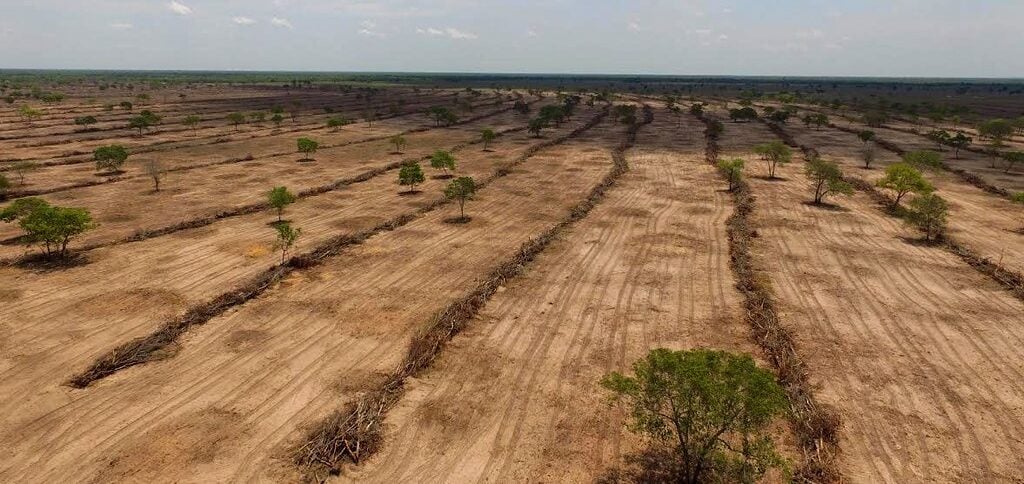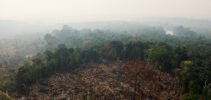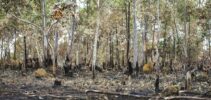Despite the great importance of the biome for the preservation of fauna, flora and indigenous peoples, experts consulted by Agência Brasil who study the Cerrado issue an alert: the advancement of export agriculture along with the Sacrifice Biome thesis have put the future of the Brazilian savannah at risk.
ADVERTISING
Studies indicate that most of the deforestation of the Cerrado occurs in the Matopiba region, an agricultural frontier area that encompasses the states of Maranhão, Tocantins, Piauí and Bahia – the term arises from the combination of the first syllable of these states.
Between January and July 2023, 85% of the biome's deforestation occurred in Matopiba, according to an analysis by the Amazon Environmental Research Institute (Ipam) which, despite its name, also has the Cerrado as an object of study.
The researcher of Matopiba Observatory Patrícia da Silva highlighted that the Cerrado has been considered by scholars as a “sacrifice” zone.
ADVERTISING
“We tend to look a lot at the Amazon and are becoming more permissive with what happens in the Cerrado, even though the Cerrado is the cradle of Brazil's waters and where eight of the country's 12 most important river basins originate,” he highlighted.
Deforestation
Enquanto or deforestation in the Amazon decreased by 42,5% between January and July this year, in Cerrado grew 21,7% compared to the same period in 2022. In other words, 582 thousand hectares of Cerrado were deforested until July this year, an area similar to the size of the Federal District. Each hectare is equivalent to a football field.
For geographer and doctor in Forestry Sciences Yuri Salmona, executive director of Cerrados Institute, deforestation has been growing in recent years because the Cerrado is an unprotected biome, where environmental governance has been left in the hands of the private sector and state governments.
ADVERTISING
For Salmona, there is an idea, widespread even internationally, that Amazon resolves the Brazilian environmental agenda.
“On the other hand, the Brazilian State and Brazilian society have built the idea that the Cerrado is a biome of sacrifice. So, let's sacrifice this biome in the name of agribusiness and in the name of the preservation of the Amazon itself. Hence you see a dynamic in which the deforestation that would go to the Amazon comes to the Cerrado,” he explained.
The director of the Cerrados Institute added that this vision makes no sense because the Cerrado supplies the Amazon basins through the Xingu River and the Tocantins-Araguaia basin. “The water that flows in the Amazon River and supplies the Amazon basin, in large part, comes from the Cerrado”, concluded the expert who argued that the Amazon and Cerrado are “sister biomes”.
Agribusiness
Currently, half of the Cerrado area is occupied by animal and grain production. In 1985, agriculture occupied just over a third (34%) of the biome, according to a study by MapBiomas. O survey carried out with satellite data revealed that, between 1985 and 2022, the Brazilian savanna lost 25% of its native vegetation to deforestation.
ADVERTISING
And the trend is for deforestation to continue, as agriculture is expected to expand in the Cerrado in the coming years, according to research by the Ministry of Agriculture and Livestock (Mapa). The folder provides a 37% increase in grain production in Matopiba in ten years. With this, the sector should increase the explored area by 17%, which represents an expansion of the agricultural frontier of 1,6 million hectares in the period.
The agricultural production that predominates in Matopiba is carried out by large companies, with international investments, which produce grains on a large scale, with highly mechanized production, and aimed at exporting so-called commodities, which are raw materials in their raw state, according to researcher Patrícia da Silva.
Challenges
The executive director of IPAM, André Guimarães, considers that the high degree of deforestation in the Cerrado puts the biome at “very high risk”. According to him, unlike the Amazon, where deforestation is concentrated on public lands, in the Cerrado most of it is on private farms, which requires another type of action from the State.
ADVERTISING
“We are failing as a Brazilian State by not regulating the articles of the Forest Code that generate incentives for private owners to give up their right to deforest,” he highlighted.
The Forest Code, while limiting deforestation to 20% of private property in the Amazon, in the Cerrado allows deforestation of up to 80% of property. “This makes it difficult to reduce deforestation. In the Cerrado, they can legally deforest”, highlights Ane Alencar, coordinator of MapBiomas Cerrado.
“In the Cerrado, the issue goes far beyond being just a legal issue, it involves a question of good practices, of encouraging better reuse of already deforested areas and greater efficiency in the production of these areas. So, it’s a much bigger challenge than in the Amazon,” he says.
On the other hand, researcher Patrícia da Silva considers that even deforestation considered legal is irregular.
“The research we have done shows that, although there is a good part of this deforestation that is “legal”, that is, it has a Vegetation Suppression Authorization (ASV), these authorizations present problems and irregularities in their issuance”.
MMA
In a public hearing in the Senate at the end of August, the Minister of the Environment Marina Silva reported that the ministry is preparing a new plan against deforestation in the Cerrado that should be put up for public consultation this September.
At the same time, Marina highlighted that the plan will not be successful without the participation of the states:
“Considering that more than 70% of the deforestation that is taking place in the Cerrado has a license to deforest, what we will need is, let's say, to revisit these licenses to find out their level of legality.”
Our report sought out the Agricultural Parliamentary Front (FPA) and the National Confederation of Agriculture (CNA) to take a position on the deforestation of the biome for agricultural production, but received no response until the publication of this report.
(With Brazil Agency)
Read also
* The text of this article was partially generated by artificial intelligence tools, state-of-the-art language models that assist in the preparation, review, translation and summarization of texts. Text entries were created by the Curto News and responses from AI tools were used to improve the final content.
It is important to highlight that AI tools are just tools, and the final responsibility for the published content lies with the Curto News. By using these tools responsibly and ethically, our objective is to expand communication possibilities and democratize access to quality information. 🤖





